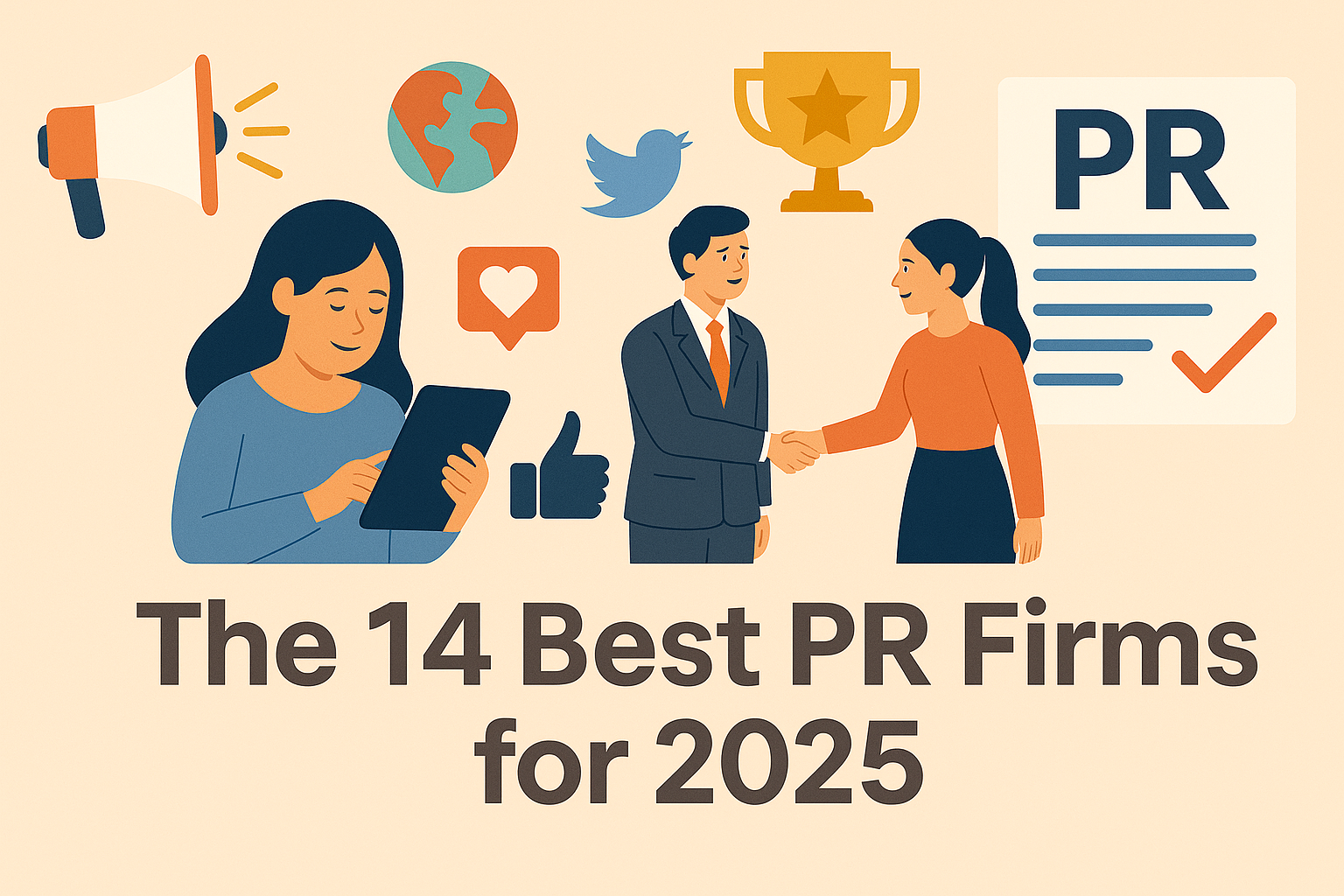Public relations is an essential aspect of any successful business, and implementing the right strategies can help you establish brand credibility, generate leads, and close deals.
When it comes to PR, many businesses fall into the trap of only pitching to top-tier press outlets like Forbes, Newsweek, and the Wall Street Journal. While getting coverage from these outlets is certainly valuable, it’s important not to overlook other opportunities.
Unlike consumer-facing companies, B2Bs typically have a more niche audience with specific needs and pain points. Effective PR can help B2Bs reach and engage this audience, build brand awareness, and establish credibility as a trusted industry leader.
One of the main benefits of PR for B2Bs is the ability to increase visibility and reach among target audiences. Through strong media relations and strategic pitching, press release, and messaging tactics, PR can help companies secure valuable earned media coverage in industry publications and other relevant outlets. This can not only help drive website traffic and leads but also increase brand recognition and thought leadership within the industry.
PR can also be a powerful tool for building credibility and trust with customers and prospects. By sharing industry insights and expertise through thought leadership content and speaking engagements, B2Bs can position themselves as trusted advisors in their field.
PR is a crucial component of any successful B2B marketing strategy. By leveraging the right tactics and channels, B2Bs can use PR to drive brand awareness, establish credibility, and ultimately drive growth for their business.
Here are our top five B2B PR tactics that actually move the needle and generate measurable impact for B2Bs:
5 B2B PR Tactics
1. Base your PR pitch strategy on your audience.
When it comes to B2B PR, it’s important to remember that your audience is the key to success. While it’s certainly valuable to land coverage in top-tier press outlets, assuming that they are the only media outlets that matter is short-sighted.
Instead, focus on understanding your target audience and where they consume media. This will help you tailor your PR pitch strategy to the publications and journalists that are most likely to resonate with your audience and generate meaningful coverage.
Take the time to research the publications that your audience reads and trusts, and tailor your pitch accordingly. This may mean targeting niche publications or industry-specific journalists rather than only pitching to the biggest names in the business. By focusing on your audience, you can ensure that your PR efforts are more targeted, effective, and, ultimately, more impactful for your business.
At the end of the day, B2B PR is about building relationships and generating coverage that will help you achieve your business goals. By basing your pitch strategy on your audience, you can increase the chances of landing coverage that will resonate with your target customers and drive real business results.
Related reading: How To Write Media Pitches That Get Journalists, Editors, and Podcasters’ Attention (+Free Template)
2. Use a long-tail PR strategy
One of the keys to a successful B2B PR strategy is to take advantage of every opportunity that comes your way. This means adopting a long-tail PR strategy, which involves targeting a broader array of niche publications and industry-specific outlets that your target audience reads. By doing this, you can generate more qualified leads and establish yourself as an expert in your industry.
Our CEO, Shama Hyder, explains a long-tail PR strategy as a Youtube methodology:
Another way to take advantage of every opportunity is to stay on top of trending topics and news stories related to your industry. If there’s a breaking news story or industry trend that’s getting a lot of attention, try to find a unique angle or perspective that you can offer to journalists (commonly called newsjacking). This can help you get quoted in articles or featured as an expert source in news segments, which can be a valuable source of exposure for your business.
Don’t overlook the power of thought leadership. By creating and publishing high-quality content that showcases your expertise, you can establish yourself as a trusted authority in your industry. This can help you build your brand, generate more leads, and close more deals. So, be sure to take advantage of every opportunity to showcase your thought leadership and expertise, whether that’s through blog posts, whitepapers, webinars, or speaking engagements.
3. Be the go-to source when journalists have questions.
Building strong relationships with journalists is essential for getting more press attention for your B2B business. And the best way to do this is to be willing to help and present yourself as a go-to source when journalists have questions. When a journalist reaches out to you for a comment or insight on a topic they’re covering, be sure to answer thoughtfully and promptly. By doing so, you can establish yourself as a reliable and helpful source, which can lead to more media coverage in the future.
One of the key benefits of being a go-to source for journalists is that it can lead to more press opportunities. Once you appear in a number of one journalist’s stories, other journalists will take notice and may reach out to you for additional insights. This can lead to more media coverage and exposure for your business, which can help generate more leads and close more deals.
To be a successful go-to source, it’s important to stay up-to-date on the latest news and trends in your industry. This will enable you to provide unique insights and perspectives that journalists won’t find elsewhere. Additionally, be sure to build relationships with journalists by following up after interviews, offering to connect them with other sources, and thanking them for their time. By doing so, you can establish a reputation as a valuable and reliable source, which can lead to more media coverage for your business.
4. Bring your press hits to your audience.
Getting great press hits is only half the battle. If you want to make the most of your media coverage and reach a wider audience, you need to bring your press hits to your audience. Most people consume content through social media, so it’s important to amplify your media coverage on platforms like LinkedIn, Twitter, and Facebook.
Related reading: Why Every PR Campaign Needs Social Media Marketing
But social media isn’t the only way to bring your press hits to your audience. You can also include links to your media coverage on your website, in your newsletter, and in your sales strategy. By doing so, you can showcase your credibility and expertise to potential customers and partners, which can help you generate more leads and close more deals.
It’s also important to remember that not all press hits are created equal. Some media outlets and publications carry more weight than others, depending on your target audience. So, when sharing your media coverage, be sure to focus on the outlets that your target audience trusts and reads regularly. This will help you maximize the impact of your media coverage and reach the right people.
And don’t forget to track your media coverage and use it to inform your PR strategy going forward. By analyzing which outlets and topics generate the most coverage and engagement, you can refine your pitch strategy and focus on the areas that are most likely to move the needle for your business.
5. Offer to contribute articles.
One effective way to generate more media coverage and establish yourself as a thought leader in your industry is to offer to contribute articles to relevant publications. Writing opinion pieces, features, and topical articles can be a lot of work, but it’s also a valuable opportunity to showcase your expertise and share your insights with a wider audience.
By offering to write a contributed article, you can help a publication gain strong content from an expert perspective without putting another assignment on their writing team. This can help you build relationships with journalists and editors, who may be more likely to turn to you for expert commentary and insights in the future.
When offering to contribute an article, be sure to do your research and target publications that align with your expertise and audience. Take the time to understand the publication’s style and audience, and tailor your pitch accordingly. And, of course, be prepared to put in the work to write a high-quality piece that provides value to the publication’s readers.
Many agencies and organizations balk at contributed articles because they can be a heavy lift—after all, writing a well-thought-out, engaging, and strategic piece can be challenging. At Zen Media, we appease those concerns by offering highly skilled ghostwriters who can take our thought leaders’ ideas, opinions, and insights, and turn them into polished and publishable articles that meet all of the publication’s specifications. Give us your bullet points and blessings, and we’ll handle the rest.
Related reading: Ghostwriting: Be the Expert, Outsource the Rest
Contributing articles can also be a great way to build your personal brand and establish yourself as a thought leader in your industry. By sharing your expertise and insights with a wider audience, you can increase your visibility and credibility, which can help you attract new customers and partners.
Offering to contribute articles can be a powerful PR and marketing tactic for B2B companies looking to generate more media coverage and establish themselves as thought leaders. By doing your research, tailoring your article to the publication’s style and audience, and putting in the work to write a high-quality piece, you can showcase your expertise and build relationships with journalists and editors, all while building your personal brand and generating more leads for your business.
Effective B2B PR requires a strategic approach that’s tailored to your audience and business goals. By leveraging the tactics above, you can increase the chances of generating meaningful coverage that will help move the needle for your business.
Remember, B2B PR is not just about getting your name in the headlines—it’s about building relationships and generating coverage that will help you achieve your business goals. By focusing on your audience, being a valuable resource for journalists, and amplifying your press coverage, you can position your business as a thought leader in your industry, attract new customers, and ultimately drive growth.
So, whether you’re just starting out with B2B PR or looking to take your efforts to the next level, keep these tactics in mind, and don’t be afraid to experiment and try new things. With the right approach and a bit of persistence, you can generate the coverage and visibility your business needs to succeed. But if that sounds like a lot to manage in-house, reach out. B2B PR is just one of the many things we can take off your plate.





